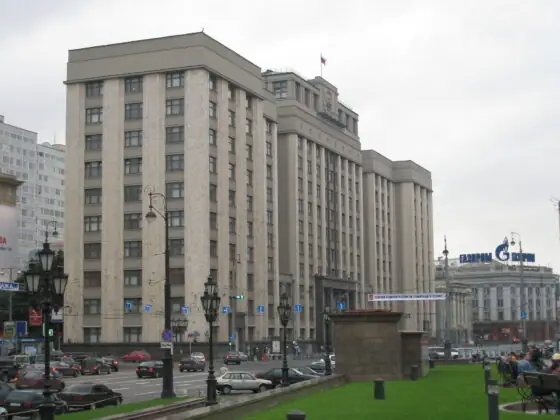New publication:
Россия "двухтысячных": Стереоскопический взгляд/Коллективная монография под общей ред
Генри Хейла и Ивана Куриллы, Планета, 2011
("Russia in the 2000s: A Stereoscopic View, edited by Henry Hale and Ivan Kurilla, Planeta, 2011")
This new Russian-language volume features contributions from a number of PONARS Eurasia members, including Georgi Derluguian, Vladimir Popov, Graeme Robertson and Regina Smyth.
Click here for the table of contents and here for an electronic copy.
———–
IERES Event Recap: "Russia in the 2000s: The Prelude to High Putinism?"
IERES Director and PONARS Eurasia member Henry Hale opened the book launch event to a full house at the Elliott School on Monday October 10. He described how the project emerged when both Russian and American scholars wrangled with the question of how society in Russia changed – and is changing – during the Putin era. He said the project’s goal was to assess the whole range of developments from the first decade of the Putin era, employing a variety of disciplines (hence the usage of the term “stereoscopic”).
Ivan Kurilla, a PONARS Eurasia member from Volgograd State University, Russia, attended the event, presented his findings, and answered questions. He described the 2000s in Russia as an interesting decade because it defies easy explanation from previous models used in political science. Developments over the past ten years defy easy explanation and require nuance and sophisticated analyses, he said, and any new analyses needs to incorporate “regional dimensions” and move beyond Moscow and St. Petersburg-centric outlooks.
Both Hale and Kurilla addressed the issue as to whether Russia is an authoritarian or democratic regime, an opportune moment because Prime Minister Vladimir Putin recently announced he would "return" to the presidency. Kurilla said, "I cannot say it is an authoritarian regime, but it surely is not democratic." Hale said he sees Russia as a "hybrid regime," as opposed to a "democratizing" or unconsolidated democracy. He stressed that it is different than a consolidated dictatorship. Hale noted that there are meaningful opposition groups and these groups are allowed to participate, but that the competition in any elections is skewed toward Kremlin-approved parties. In this aspect, Russia is very different from Burma, Uzbekistan, or Saudi Arabia, and that this difference has important research implications.
Hale and Kurilla launched into a discussion of the state structures of the Putinist system. The current political structure in the Russian Federation is a “single pyramidal system” formed under the office of the president similar to Tammany Hall. The multiple power centers occupied by regional governors in the 1990s and the instability of uneven privatization influenced the creation of the single pyramidal structure, they argue. Moreover, large oligarchic corporations came out of the uneven privatization efforts and became more cooperative with the government, similar to corporatist models of governance. The second constitution of the Russian Federation, with its high levels of presidential authority, steered the governance model of Russia toward the “Putinist” monolithic structure. The first test to this monolithic system came with the 1996 election. Originally a "weak" single pyramid, the problem of succession began to be the gadfly of the Russian governance system, and continues to be so. However, as the support of the oligarchs and the security apparatus became more apparent, the pyramid coalesced and opposition members starting changing sides. This led to only marginal opposition parties remaining, with the majority having often strong connections to the Kremlin.
After a providing examples from the book and their own interesting overviews of Russia, Hale and Kurilla fielded questions from the audience about recent developments in Russia. One audience member asked whether the panelists viewed Putin’s return to the presidency as a decision to take the Chinese path of the late 1980s, while others challenged Hale and Kurilla on whether Western-style democracy would be beneficial for Russia, or if “hybrid” was the correct way to describe its pyramidal structure. In his concluding remarks, Hale noted that the art of prediction is always difficult, and wherever Russia will be in the next ten to twenty years will be "surprising."
The event was moderated by IERES Assistant Director Robert Orttung.








